Indigenous
Goomalling has a rich Aboriginal history and is an Aboriginal word which means ‘the place of the silver-grey possum’; ‘goomal’ or ‘koomal’ meaning ‘possum’ and ‘ing’ meaning ‘place of’.
"Within the present day boundary of the Goomalling Shire are many place names of Aboriginal origin, chiefly water holes and geographical features which the Balardong people hospitably escorted the Europeans to on their explorations, and gladly pointed out when shepherds and settlers moved into the district."
- Page 2, 'Goomalling a Backward Glance: a History of the District' by Barbara Sewell.
Indigenous place names in Goomalling
Some of the many local Indigenous place names include Booramugging, Bebakine, Boonjading, Birringdinning (later abbreviated by Europeans to Berring), Burabadji, Bolonine, Cutherling, Cularing, CooningCooning, Karranadgin, Dumbermining, Emuming, Elyaring, Goonaring, Jennacubbine, Jurokine, Jinjinning, Kalguddering, Konnongorring, Mumberkine, Mungalin, Qualin, Mindunning, Namelbuling (later abbreviated by Europeans to Nambling), Uberin, Wongamine, Muggamuggin, Quelquelling and Ucarty.
Old native reserve
On the south west corner of where Calingiri Rd meets Main St, there used to be a 'native reserve', where Goomalling's Aboriginal families were sent to live away from the white settlement. A strict curfew was imposed on aboriginal people whereby they had to be off the streets between the hours of 6am-6pm unless they had written permission from the authorities. Five generations of Walley descendants lived on the reservation beginning with Martin and Julia Walley. The families had and still have a strong spiritual connection to the reserve where they practiced traditional aboriginal customs including hunting, corroborees, telling dreamtime stories and how to look after the land.
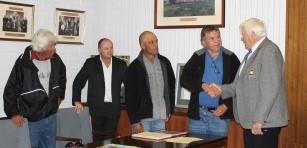 Memorandum of Understanding between the Shire of Goomalling and Koomal Aboriginal Committee was signed 18 September 2013 outlining the significance of the land to the Ballardong people and Shire of Goomalling’s commitment to maintaining Lot 495 and 503 Calingiri Road (Freehold Land) in recognition of the Indigenous History of the site.
Memorandum of Understanding between the Shire of Goomalling and Koomal Aboriginal Committee was signed 18 September 2013 outlining the significance of the land to the Ballardong people and Shire of Goomalling’s commitment to maintaining Lot 495 and 503 Calingiri Road (Freehold Land) in recognition of the Indigenous History of the site.
A shelter and commemorative plaque have since been erected, providing a place where Noongar people, including those who lived at the reserve and their descendents, can sit, yarn and tell their children of their life/culture and dreamtime stories that are a very important part of who they are, and a place to walk on the land and be as one with Mother Earth.
Goomalling Yarns oral histories project
The Goomalling Yarns Aboriginal History Project is a multi-faceted community arts program. It has involved oral history recordings, photo sharing, family history research and arts workshops.
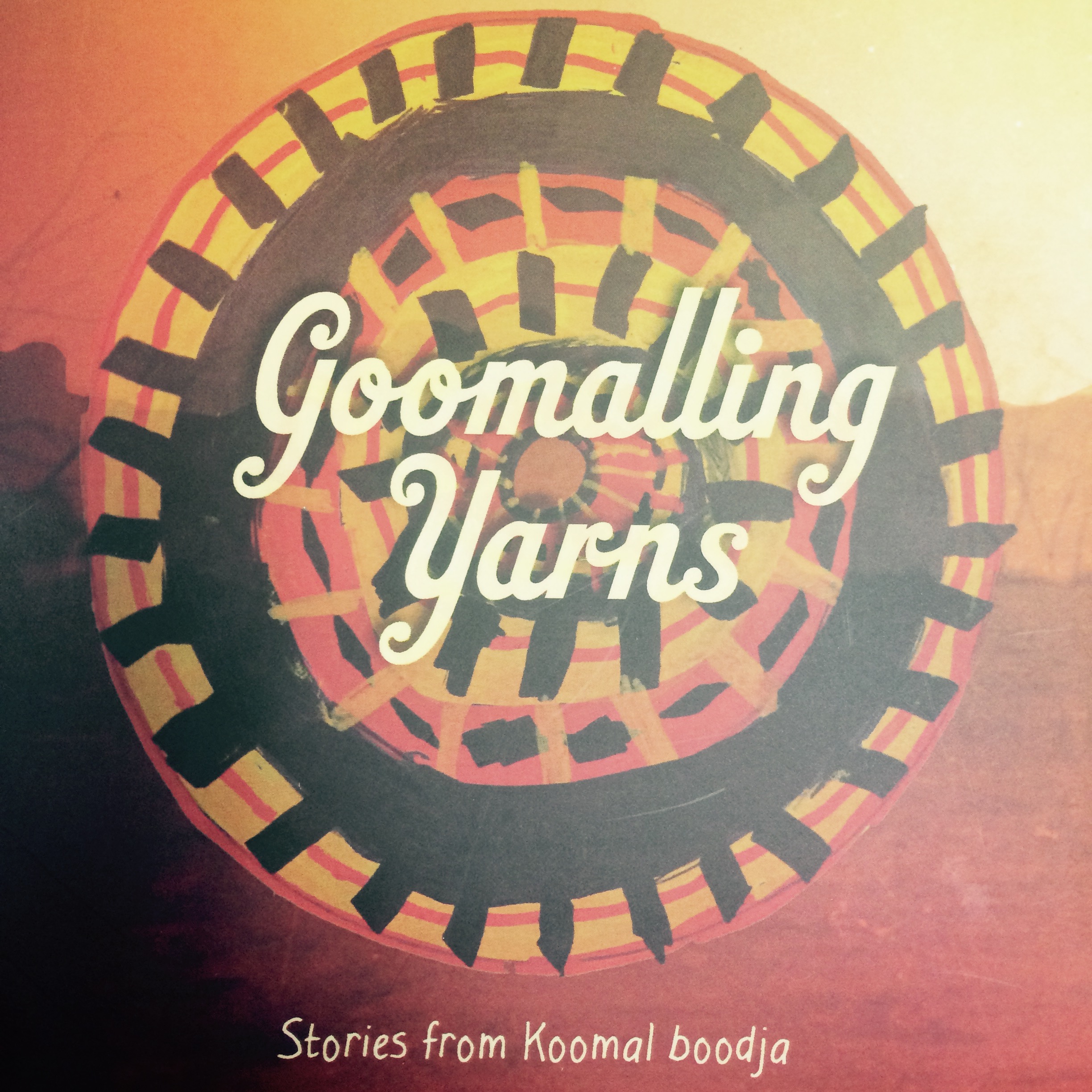 Twelve senior community members have played a pivotal role in preserving the town’s Noongar history. They shared their personal stories and memories with award winning oral historian Bill Bunbury. Former ABC sound engineer Jemma King has collated these stories into a poignant 20 minute radio documentary. Copies of the cd "Goomlling Yarns - Stories of Koomal Boodja" are available at the Shire office.
Twelve senior community members have played a pivotal role in preserving the town’s Noongar history. They shared their personal stories and memories with award winning oral historian Bill Bunbury. Former ABC sound engineer Jemma King has collated these stories into a poignant 20 minute radio documentary. Copies of the cd "Goomlling Yarns - Stories of Koomal Boodja" are available at the Shire office.
Having a sense of identity, pride and self-acceptance is the foundation for thriving young people therefore it was essential to include our indigenous young people in the project. The life stories of the Noongar community in Goomalling have inspired the town’s youth to record a hip hop music track in their honour. The song, called “Turn Back Time" was created during a two day CAN workshop under the guidance of hip hop artist Scott "MC Optamus" Griffiths from Downsyde.
You can watch and listen to both the Goomalling Yarns radio documentary and the hip hop track Turn Back Time via CAN's webpage Bush Babies -> click on the tab 'Goomalling'.
Saturday 8 August 2015 was a significant milestone for the local aboriginal people. As a community we celebrated the launch of “Goomalling Yarns” - a formal acknowledgement of their existence in Goomalling’s history, displaying genuine appreciation for their culture and their contribution to our community. In sharing these stories we hope that the broader community learns more about the cultural significance of Goomalling, and the Noongar stories of the region.
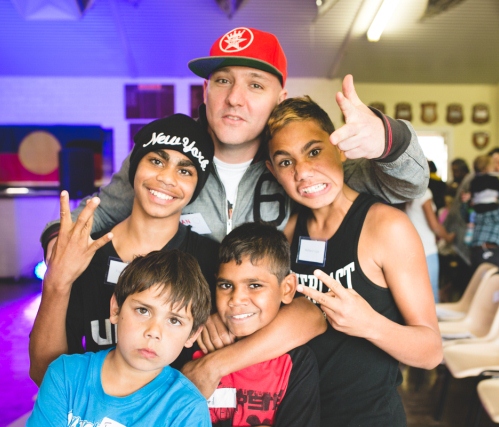
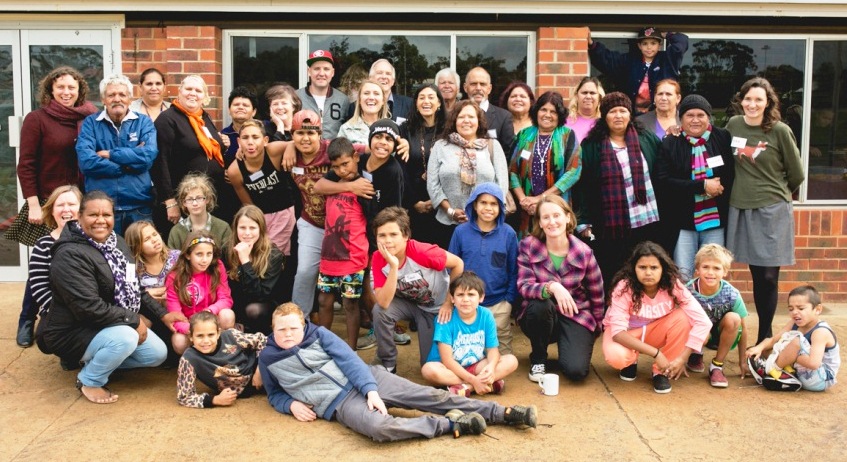
History
The first chapter in 'Goomalling – A Backward Glance' by Barbara Sewell gives an account of local Ballardong life before and after white settlement.
Oak Park and gnamma holes
The interpretative walk trail at Oak Park includes information about Goomalling's original Ballardong people and their culture. You can sit under a mya-mya (bough shelter) built by a local Aboriginal Elder and see the gnamma holes (holes in rocks where water collected).
Noongar language
Some Noongar words adopted into English include quokka (the marsupial), gilgie/jilgie (a freshwater crayfish similar to the common yabby), and gidgie/gidgee (spear).
The Tjapanmay dialect of the Noongar language (Nyoongar/Nyungar) used to be spoken in Goomalling but, sadly, it's unlikely you'll hear it today.
Ballardong Noongar Waangkany - Noongar Dictionary
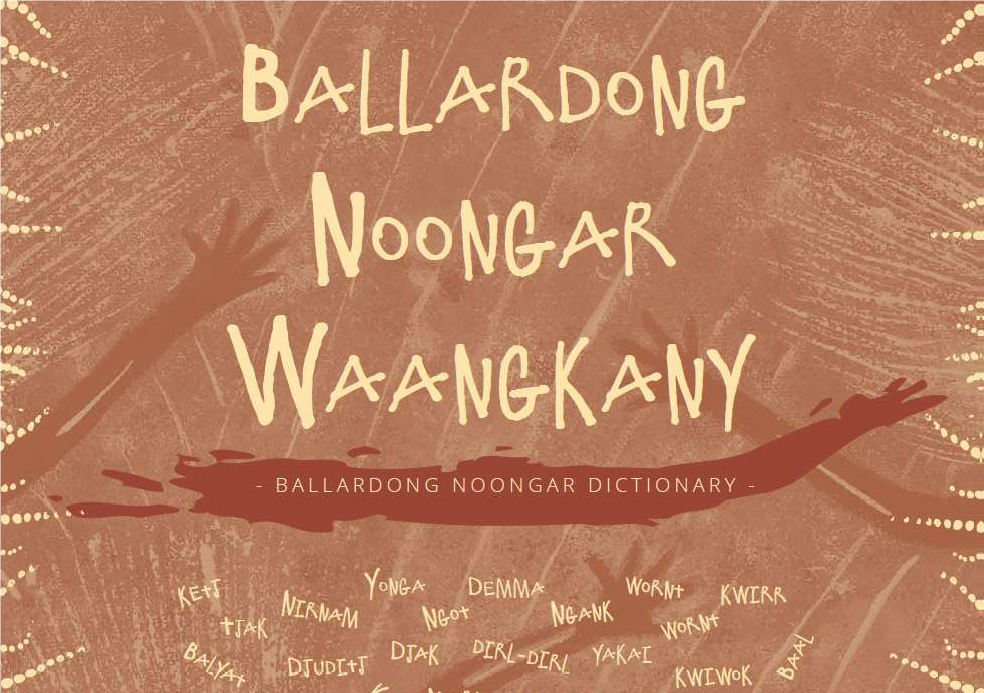 In an effort to preserve the Noongar language the Wheatbelt Natural Resource Management (NRM), with the support and contribution of the Ballardong Noongar Elders Advisory Group, have published a comprehensive Noongar Dictionary.
In an effort to preserve the Noongar language the Wheatbelt Natural Resource Management (NRM), with the support and contribution of the Ballardong Noongar Elders Advisory Group, have published a comprehensive Noongar Dictionary.
It includes the history, alphabet and grammatical structure of the Noongar language. The most frequently used words are explored through Noongar stories, culture, seasons and significant sites, followed by an extensive list of Noongar words and their translations.
Ballardong refers to the Noongar language group north-east of Perth and includes the towns of Northam, York, Beverly, Goomalling, Cadoux, Koorda, Wyalkatchem and Cunderdin, as well as Kellerberrin, Merredin, Bruce Rock, Narembeen, Hyden, Kondinin, Kulin, Dumbleyung, Kukerin, Lake Grace and Varley further east and south-east.
Resources: www.mooditjboodja.com.au & www.wheatbeltnrm.org.au
The Noongar Language Centre (Noongar Boodjar Language Cultural Aboriginal Corporation) has established an archive of written documentation at their centre in Bunbury. Their website www.noongarboodjar.com.au provides resources and activities for teachers and families to learn the Noongar language, as well as info on the history, dialects, spelling and pronunciation; in effort to "keep Noongar alive".